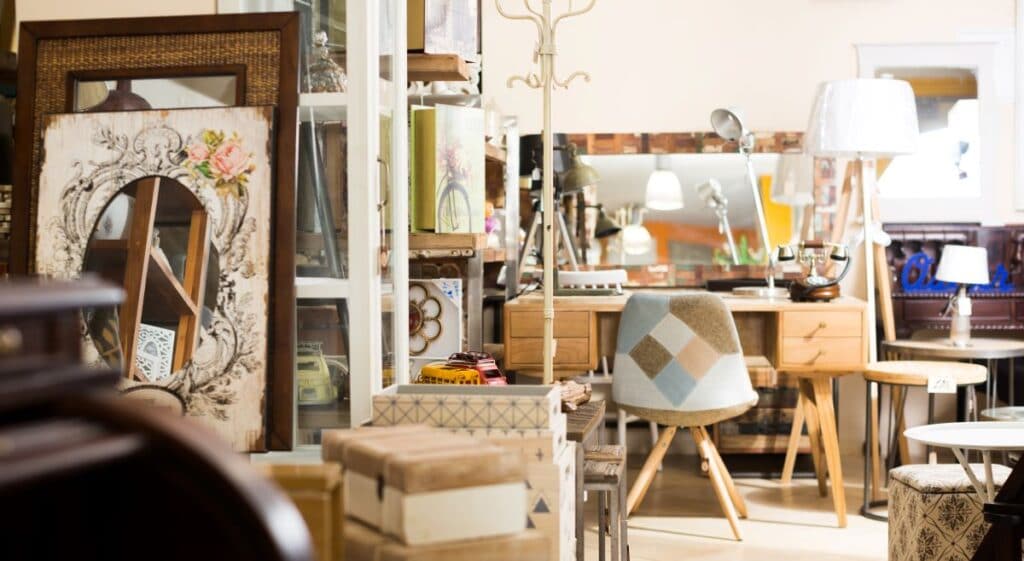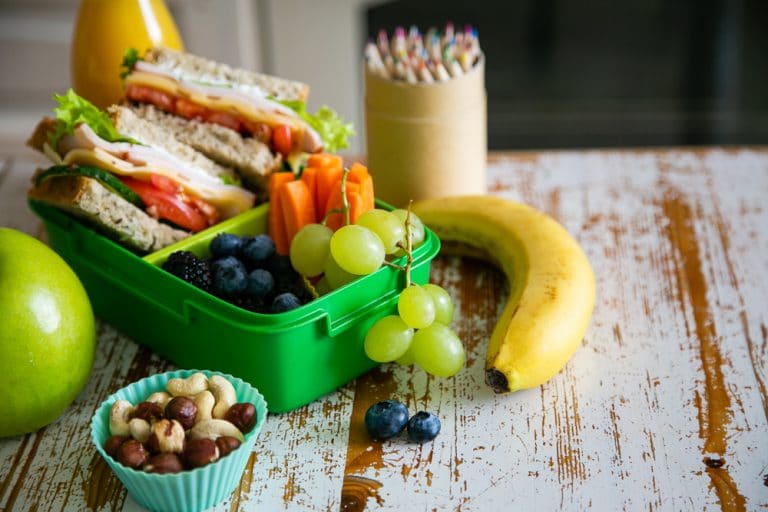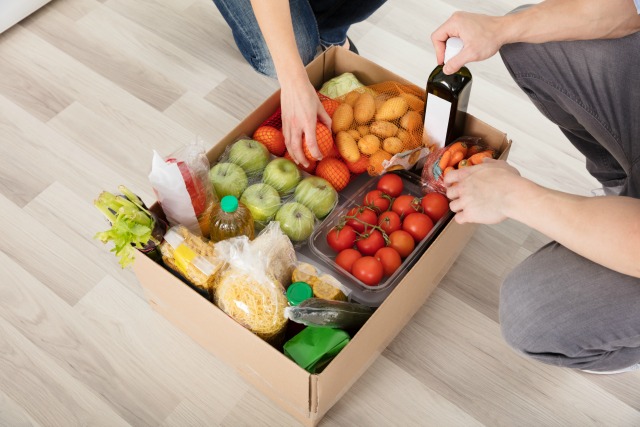Op Shop Tips: How to Shop the Second hand Stores Like a Pro
This website may earn commissions from purchases made through links in this post.
There’s a knack to shopping in second hand stores successfully.
Unlike big box stores, where you can walk in, get exactly what you want and walk out again, there’s an element of serendipity and creativity when op-shopping.
It can take time to find that perfect bargain.
When op-shopping I like looking for books, household goods, craft items and kids’ clothes and games. I do not have the knack when it comes to shopping for myself, but then again, I don’t like buying clothes for myself at the best of times. I’m in awe of those who can come away from op-shops with designer labels and trendy looks.
Second hand shopping is a frugal skill to foster. The more you do it, the more likely you will find great bargains.
Improve your bargain hunting prowess with the following 15 op shop tips.
1. STICK TO A BUDGET
Just like any shopping, decide how much you can spend before you leave the house. Even second-hand shopping can blow the budget if you overdo it.
And take cash. Not only does cash stop you from overspending, but some stores also don’t have EFTPOS and only accept cash.
2. HAVE A PLAN AND SHOP WITH A PURPOSE
The old adage: just because it’s cheap, doesn’t make it a bargain, applies to second-hand shopping just as it does to regular shopping.
Before shopping at second-hand stores, have an idea of what you’re looking for and write a list.
Define your style. Rather than shopping haphazardly, look for clothes, accessories or decor items that match your style.
Beware the hoarding gene. If you can’t use it immediately or in the foreseeable future, don’t get it, no matter how good a bargain it is.
3. BUT KEEP AN OPEN MIND
While having a plan will mean you avoid wasting money on things you don’t need, it’s also a good idea to keep an open mind.
Can something be repurposed to fill your need? Can it be renovated? Painted? Remodelled? Used as materials for a new project? Can you change your ideas slightly to accommodate what you’ve found? When it comes to clothes, look in the men’s, kid’s and women’s sections – you might find something you love in ‘another’ section.
4. GO OFTEN
Some days you may shop in second-hand stores and come out with a booty, other days may see you leave empty-handed. The thrill of the hunt is part of the fun.
As stuff is being turned over constantly, visit your favourite second-hand stores regularly to increase the likelihood of picking up that serendipitous bargain.
5. GO PREPARED
Take a measuring tape, colour swatches, clothing sizes or whatever other information you need to make an informed purchase.
Are you looking for furniture? Measure your existing space to make sure you get furniture that fits.
Do you need it delivered? Have an idea of how you’ll get items home before you buy them.
You might also like: 7 Alternate Economies to Get Things for Less.
6. SUSS OUT THE BEST SHOPS
You may have dozens of second-hand shops in your area, some hidden gems just waiting to be discovered. So don’t just stick to your local Vinnies.
Some second-hand stores are better than others. You’ll get to know which shops are worth your time and which ones don’t result in many bargains. Or which shops are good for clothes and which ones are good for second-hand homewares.
And don’t forget, if you’re on holiday check out the local second-hand shops while you’re away.
You might also like: 15 Second-Hand Gift Ideas That are a Pleasure to Receive.
7. SHOP OUTSIDE YOUR AREA
Quite often, well-to-do areas have better quality second-hand stuff. So it might pay to take a trip up the hill every so often to suss out what the other half is throwing away.
8. SHOP WITHOUT THE KIDS
Successful second-hand shopping takes time. You need time to browse and inspect. So it’s a good idea to go without the kids, especially young kids, at least some of the time.
Sometimes bargain hunting can be a good learning experience for kids, but we all need some quality time alone to shop, right ladies?
On the other hand, taking a friend thrift shopping can be a good way to hang out and get a second opinion on purchases.
9. TAKE YOUR TIME
Give yourself plenty of time to browse, rummage and inspect.
10. KNOW YOUR MATERIALS AND LOOK FOR QUALITY
I’m a brand dodo. I have no idea which brands are good. Instead of worrying about labels, learn about fabrics. Which fabrics are quality? Which materials are made to last?
When it comes to furniture, the same goes? Is it quality? Or is it chipboard?
11. HAVE AN IDEA OF PRICES
Our local Salvos charges exorbitant prices on some things. They sell Kmart kid’s clothes that are more expensive than what Kmart sells them!
So part of your preparation, if you’re looking for specific items, is to have a ballpark idea of prices and whether you’re really getting a bargain.
12. EXAMINE AND TRY BEFORE YOU BUY
Always spend plenty of time examining items before you buy. If you buy anything electrical, make sure it’s in working order before you put down any cash.
13. ASK ABOUT SALES AND MARKDOWN TIMES
Just like regular stores, second-hand stores have markdowns and sales to move stock. Ask when these times are so that you can shop on these days and save even more.
14. REPURPOSE, REPURPOSE
It’s a special skill to look beyond what is and imagine what it could be with little paint or a few stitches.
But like any skill, it’s one that can be honed with practice.
Start with what you need, and look for absolute basement bottom bargains that you can practice repurposing to meet your needs.
15. IF IN DOUBT, PUT IT BACK; IF YOU LOVE IT, BUY IT QUICK
If you’re unsure of whether to buy an item or not, then it’s a sure sign that it’s not the bargain for you. Avoid buyer’s remorse and put it back on the shelf.
On the other hand, if you love a piece, buy it. Chances are it won’t be there next time you come back to buy it.
Scouting for second-hand goods can be a great way to get what you need and save money at the same time. But it’s a serendipitous exercise. Use these tips to improve your success when looking for bargains.
WHAT ARE YOUR TIPS FOR SHOPPING FOR SECOND HAND BARGAINS?









I love to op shop, but have become a lot more strategic about it over the past few years, rather than just buying stuff because it is cheap.
It also took me quite a while to suss out the best op shops in Brisbane after I moved here. Now I definitely have my favourites, but am always looking for more!
Practice and exploring new places is definitely the fun part :).
Ask nicely – for a discount if you think the item is overpriced.
Ask nicely – do they have the item in the stockroom – it might still be in a box waiting to be sorted.
I am both an op shopper and an opshop volunteer. I treat customers with respect and courtesy. But sometimes I don’t get either back.
Yes items are donated. But the shop rent and the power bill aren’t. And as I volunteer my time to sort through ripped books with no covers, things held together by tape and school textbooks from the 1990’s i sometimes wonder why I do so.
NB I get my best bargains at garage sales and car boot sales
Hi Kirsty,
Great tip. My mil also worked as a volunteer and she had similar experiences with customers.
Sometimes it’s a hard call deciding what is garbage and what can be salvaged and used again.
Thanks for sharing re garage sales, I love a good garage sale :).
I go to my local second hand store 5 minutes before opening time as people leave things out the front and I can rummage through. I recently found a baby walker, asked the shop keeper how much and she said $5, I then put it on gumtree and sold it for $50. I also found a large box of good quality baby clothes for $5, for my bub. I find there is a huge demand for second hand baby products so I always keep a look out for anything.
Great tip!